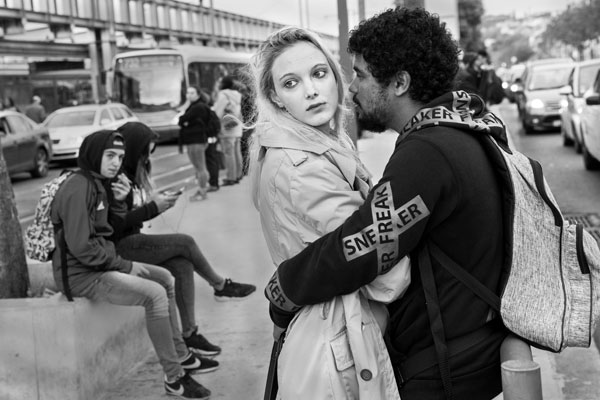Framing Streets Things To Know Before You Buy
All about Framing Streets
Table of ContentsThe smart Trick of Framing Streets That Nobody is Talking AboutA Biased View of Framing StreetsThe smart Trick of Framing Streets That Nobody is Talking AboutThe Single Strategy To Use For Framing StreetsThe Single Strategy To Use For Framing StreetsThe Basic Principles Of Framing Streets
Digital photography style "Crufts Pet dog Show 1968" by Tony Ray-Jones Road digital photography (also occasionally called candid digital photography) is digital photography performed for art or query that features unmediated chance experiences and arbitrary events within public places, generally with the goal of capturing photos at a definitive or poignant minute by cautious framing and timing. 
Our Framing Streets Ideas
Susan Sontag, 1977 Road photography can focus on individuals and their actions in public. In this respect, the road professional photographer resembles social documentary photographers or photojournalists who likewise operate in public places, but with the goal of capturing newsworthy occasions. Any one of these professional photographers' photos may catch individuals and property visible within or from public locations, which often involves browsing honest concerns and laws of privacy, protection, and residential or commercial property.
Representations of day-to-day public life create a genre in nearly every duration of globe art, beginning in the pre-historic, Sumerian, Egyptian and very early Buddhist art durations. Art handling the life of the street, whether within views of cityscapes, or as the leading motif, shows up in the West in the canon of the North Renaissance, Baroque, Rococo, of Romanticism, Realistic look, Impressionism and Post-Impressionism.
The Ultimate Guide To Framing Streets
Louis Daguerre: "Blvd du Temple" (1838 or 1839) In 1838 or 1839 the initial photograph of numbers in the street was recorded by Louis-Jacques-Mand Daguerre in among a set of daguerreotype views taken from his workshop home window of the Boulevard du Temple in Paris. The 2nd, made at the elevation of the day, shows an uninhabited stretch of street, while the other was taken at regarding 8:00 am, and as Beaumont Newhall reports, "The Blvd, so regularly full of a relocating throng of pedestrians and carriages was completely singular, except an individual that was having his boots brushed.
, that was influenced to undertake a comparable documentation of New York City. As the city developed, Atget helped to promote Parisian streets as a worthwhile topic for photography.

The Main Principles Of Framing Streets
Martin is the initial tape-recorded digital photographer to do so in London with a masked video camera. Mass-Observation was a social research study organisation founded in 1937 which aimed to videotape day-to-day life in Britain and to videotape the responses of the 'man-in-the-street' to King Edward VIII's abdication in 1936 to marry divorce Wallis Simpson, and the succession of George VI. The principal Mass-Observationists were anthropologist Tom Harrisson in Bolton and poet Charles Madge in London, and their very first record was created as guide "May the Twelfth: Mass-Observation Day-Surveys 1937 by over two hundred viewers" [] Home window cleaner at Kottbusser Tor, Berlin, by Elsa Thiemann c. 1946 The post-war French Humanist School digital photographers located their subjects on the street or in the bistro. In between 1946 and 1957 Le Groupe des XV every year displayed work of this kind. Andre Kertesz. Circus, Budapest, 19 May 1920 Road digital photography developed the significant content of two events at the Museum of Modern Art (Mo, MA) in New york city curated by Edward Steichen, 5 French Digital Photographers: Brassai; Cartier-Bresson, Doisneau, Ronis, Izis in 1951 to 1952, and Post-war European Photography in 1953, which exported the principle of street photography globally.

The Best Guide To Framing Streets
The recording equipment was 'a covert electronic camera', a 35 mm Contax concealed beneath his layer, check this that was 'strapped to the chest and linked to a lengthy cable strung down the appropriate sleeve'. His job had little contemporary influence as due to Evans' sensitivities concerning the originality of his task and the privacy of his topics, it was not published till 1966, in the book Lots of Are Called, with an intro created by James Agee in 1940.
Helen Levitt, then an educator of kids, related to Evans in 193839. She documented the temporal chalk illustrations - Street photography that were component of youngsters's street culture in New york city at the time, along with the kids that made them. In July 1939, Mo, MA's brand-new photography area consisted of Levitt's work in its inaugural exhibitRobert Frank's 1958 publication,, was substantial; raw and typically indistinct, Frank's photos questioned traditional digital photography of the moment, "challenged all the official regulations laid down by Henri Cartier-Bresson and Walker Evans" and "flew in the face of the wholesome pictorialism and wholehearted photojournalism of American magazines like LIFE and Time".